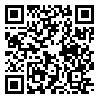Volume 3, Issue 2 (2013)
ORMR 2013, 3(2): 1-20 |
Back to browse issues page
Download citation:
BibTeX | RIS | EndNote | Medlars | ProCite | Reference Manager | RefWorks
Send citation to:



BibTeX | RIS | EndNote | Medlars | ProCite | Reference Manager | RefWorks
Send citation to:
Bnyadi naeini A, Jalali naeini G R, Fahima M. Designing Organizational Culture Adaptive Model in Excellence Productivity of Employees
(Case Study: Bank Sepah). ORMR 2013; 3 (2) :1-20
URL: http://ormr.modares.ac.ir/article-28-3817-en.html
URL: http://ormr.modares.ac.ir/article-28-3817-en.html
1- . Industrial Department’s Associate, Iran University of Science and Technology, Tehran, Iran
2- Department progression’s Assistant, Iran University of Science and Technology, Tehran, Iran
3- Master of EMBA, Iran University of Science and Technology, Tehran, Iran
2- Department progression’s Assistant, Iran University of Science and Technology, Tehran, Iran
3- Master of EMBA, Iran University of Science and Technology, Tehran, Iran
Abstract: (10635 Views)
Today strategic plans and organizational structure of the precursor organizations is constructed according to developing and improving human resources productivity. In order to attain to this goal, organizational culture role is should be considered. By conducting a conceptual survey on organizational culture and Islamic teachings models expressed by human resources researchers, a model-based approach have been designed. The purpose was to improve the productivity of native workers in the field offices of Bank Sepah. The results of this study indicate that the ability to develop and successfully deploy an organizational culture model, will have a high impact on the optimizing potential productivity of individual employees. The model is evaluated in terms of meaningfulness, and observed that the theoretical model is statistically meaningful. Also the model has theoretical and practical significance in terms of the suitability of conditions and according to statistics calculated by statistical software used in this research.
Keywords: Organizational Culture, personal productivity, organizational culture model, improving productivity
Received: 2013/11/16 | Accepted: 2014/07/16 | Published: 2014/08/23
| Rights and permissions | |
 |
This work is licensed under a Creative Commons Attribution-NonCommercial 4.0 International License. |







